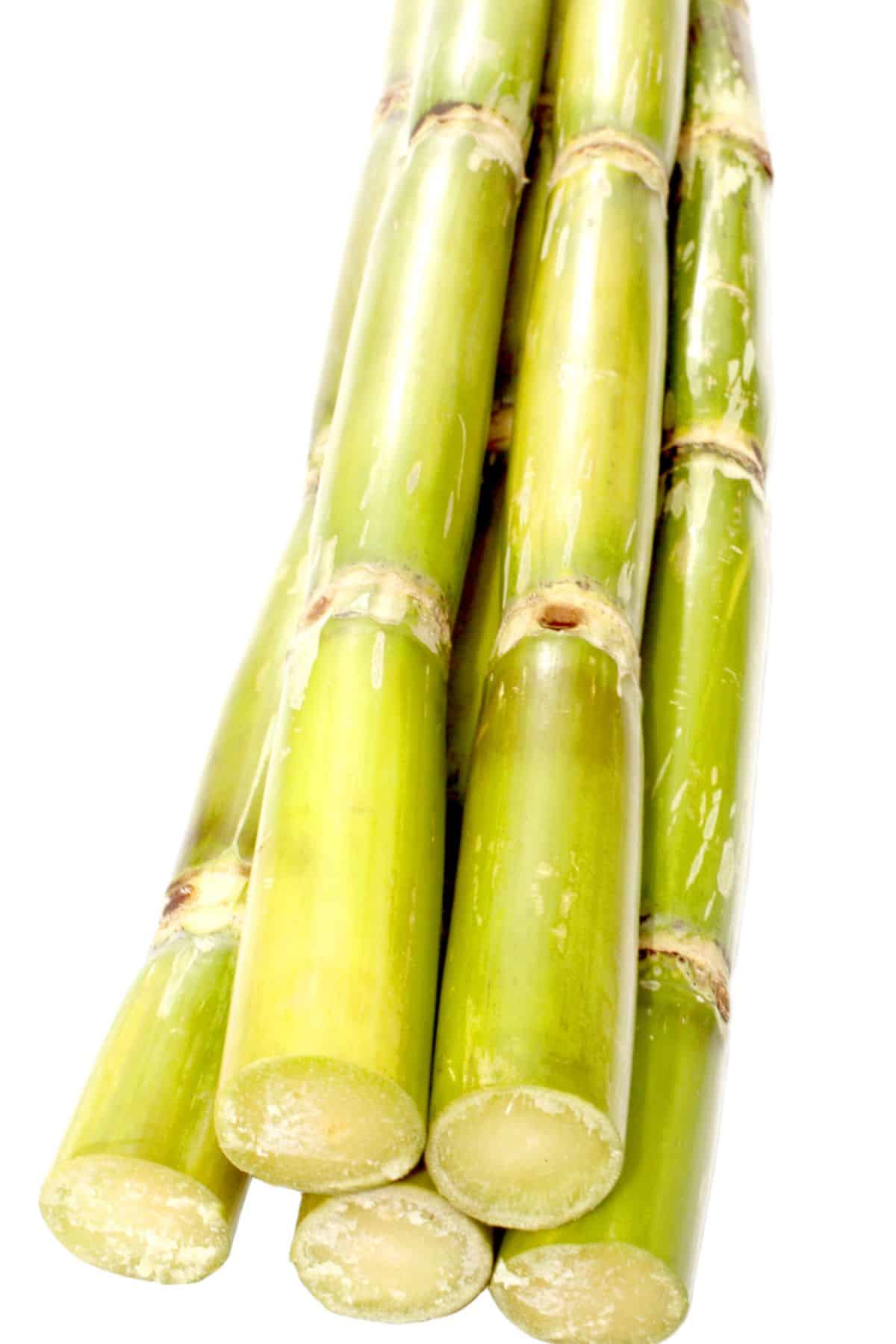Cane Sugar Processing: Traditional Methods and Modern Innovations
Wiki Article
A Thorough Overview to the Environmental Effect and Sustainability Practices in Cane Sugar Processing
The ecological impact of walking cane sugar processing provides a complex array of challenges that warrant mindful exam. From soil deterioration and too much water usage to the carbon impact linked with cultivation and production, the effects of traditional methods are far-ranging. In contrast, the adoption of ingenious sustainability actions provides a path toward extra responsible production techniques. Recognizing the interplay in between these concerns is important for stakeholders in the sector. What specific techniques can be applied to strike a balance between productivity and environmental stewardship? The responses hinge on a more detailed look at both the challenges and prospective options.Summary of Walking Cane Sugar Processing
Walking stick sugar processing entails a collection of organized actions that change sugarcane into refined sugar. Originally, gathered sugarcane is transported to refining facilities, where it undergoes cleansing to remove soil and particles. Following this, the walking cane is squashed to extract juice, which is after that cleared up by removing impurities via heating and the enhancement of lime.The made clear juice undergoes dissipation, where water is eliminated to concentrate the sugar material. This concentrated syrup is after that crystallized via cooling, permitting sugar crystals to develop. These crystals are separated from the continuing to be syrup utilizing centrifugation, causing raw sugar. To accomplish refined sugar, the raw item undergoes additional filtration processes, which might include cleaning and filtering system to eliminate continuing to be pollutants and shade.
The end product is after that dried out and packaged for distribution. Throughout this whole process, preserving performance and quality assurance is important to make certain the sugar meets market requirements. Each action in cane sugar processing not only contributes to the end product yet also has implications for resource use and waste generation, establishing the phase for conversations on sustainability and ecological impacts related to sugar production.
Environmental Challenges of Manufacturing
The production of cane sugar provides a number of substantial ecological obstacles that warrant focus. One primary worry is the considerable use agrochemicals, consisting of plant foods and chemicals, which can cause dirt deterioration, biodiversity loss, and contamination of neighborhood water resources. The overflow from sugarcane areas usually lugs these chemicals into nearby environments, interfering with marine life and impacting the health and wellness of neighborhoods reliant on these water bodies.Another challenge is the high energy intake connected with sugarcane handling. The boiling and refining phases require substantial warmth, largely produced by burning fossil fuels, adding to greenhouse gas emissions. In addition, the extensive acreage needed for sugarcane farming can cause logging and environment devastation, more exacerbating environment change and threatening wild animals.
In addition, the labor methods in some regions elevate honest concerns, as employees may encounter bad working problems and insufficient wages. This scenario commonly perpetuates a cycle of destitution in local communities. Cane Sugar Processing. Attending to these ecological difficulties is essential for creating much more lasting methods in cane sugar production, inevitably benefiting both the setting and the communities associated with this industry
Water and Land Use Influence
Water sources and land use are critical elements in the walking cane sugar industry that dramatically impact the atmosphere. The farming of sugarcane requires substantial water input, with quotes recommending that it can eat up to 2,000 liters of water per kilo of sugar generated. This intensive use of water typically leads to exhaustion of regional water sources, influencing not only the sugarcane ranches however additionally bordering ecosystems and neighborhoods that rely upon the very same water resources for farming and domestic use.
Furthermore, land usage for sugarcane farming can lead to logging and the conversion of all-natural environments into monoculture plantations. This practice decreases biodiversity, interrupts regional ecological communities, and adds to dirt deterioration. The development of sugarcane areas usually encroaches on valuable farming land, developing competitors for sources between food and biofuel production.
Lasting techniques, such as maximizing watering techniques and executing crop turning, are important to minimize these influences. By embracing extra reliable water use and land administration techniques, the cane sugar sector can minimize its ecological impact, making certain an equilibrium between farming efficiency and environmental conservation.
Greenhouse Gas Emissions
Greenhouse gas discharges represent a substantial environmental concern within the walking cane sugar processing market, especially as farming methods expand to satisfy global need. The cultivation of sugarcane, a plant that thrives in exotic climates, relies greatly on artificial fertilizers and chemicals, which add to laughing gas discharges. In addition, land-use modifications, consisting of logging for brand-new sugarcane plantations, release co2 kept in greenery and soil.During processing, power intake is another major source of greenhouse gas discharges - Cane web Sugar Processing. Numerous sugar mills utilize nonrenewable fuel sources to power machinery and generate warmth, causing considerable carbon footprints. Moreover, the transport of raw sugarcane and completed items includes layers of discharges with fuel combustion in cars
The collective impact of these discharges intensifies environment adjustment, positioning threats not just to the atmosphere however also to the long-lasting practicality of the sector. Stakeholders should identify the immediate need for comprehensive strategies that deal with these discharges. This entails assessing current farming techniques, refining approaches, and transport systems to identify locations for renovation and reduction. Resolving greenhouse gas discharges is essential for fostering a more lasting walking cane sugar sector in an altering climate.

Lasting Practices and Innovations
Lasting practices and innovations are increasingly important in the cane sugar handling market as stakeholders seek to decrease environmental effects while maintaining efficiency. One considerable innovation is the implementation of integrated crop monitoring, which enhances source this hyperlink use by incorporating soil administration, pest control, and plant turning methods. This strategy boosts return while lessening chemical inputs and preserving soil wellness.Moreover, the fostering of renewable power resources, such as biomass from sugarcane residues, has acquired traction - Cane Sugar Processing. By transforming waste products into power, refining centers can minimize their dependence on fossil gas, therefore decreasing greenhouse gas discharges
Water administration techniques have actually additionally seen improvements through the recycling and reusing of water in processing plants, substantially reducing freshwater consumption. Innovations in innovation, such as precision agriculture, enable farmers to monitor plant wellness and source usage better, ensuring sustainable farming methods.
Furthermore, certification programs like Fair Profession and Rainforest Alliance urge eco responsible farming methods and advertise social equity within the supply chain. By welcoming these sustainable techniques and technologies, the walking stick sugar processing sector can improve its durability and contribute favorably to environmental stewardship.
Conclusion
The ecological effect of cane sugar handling provides significant obstacles, including soil deterioration, high water consumption, and greenhouse gas exhausts, together with ethical worries connected to labor techniques. Attending to these issues through sustainable methods, such why not try here as integrated crop administration, renewable resource fostering, and water recycling, is important. By advertising environmentally responsible and socially equitable techniques in sugar manufacturing, the industry can minimize its unfavorable impacts, ensuring a much more lasting future for both communities and areas associated with this market.Walking cane sugar processing includes a collection of organized steps that transform sugarcane right into polished sugar. Each action in cane sugar processing not just adds to the final item but also has ramifications for source usage and waste generation, establishing the phase for discussions on sustainability and environmental impacts connected with sugar manufacturing.
Greenhouse gas exhausts stand for a significant environmental worry within the walking cane sugar handling sector, specifically as farming techniques expand to meet global demand.Sustainable practices and advancements are significantly vital in the walking stick sugar processing market as stakeholders seek to decrease environmental impacts while maintaining productivity.The ecological influence of walking cane sugar handling provides considerable difficulties, including soil degradation, high water intake, and greenhouse gas exhausts, together with moral worries associated to labor practices.
Report this wiki page